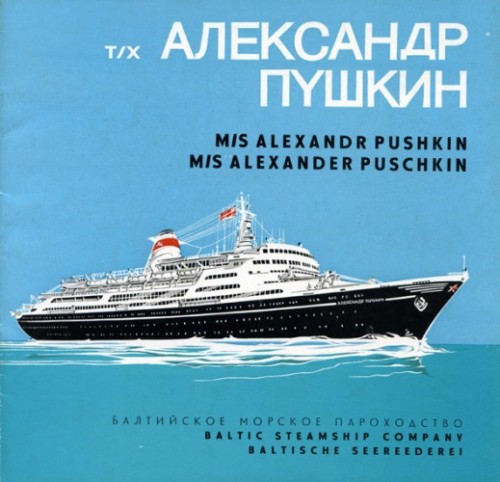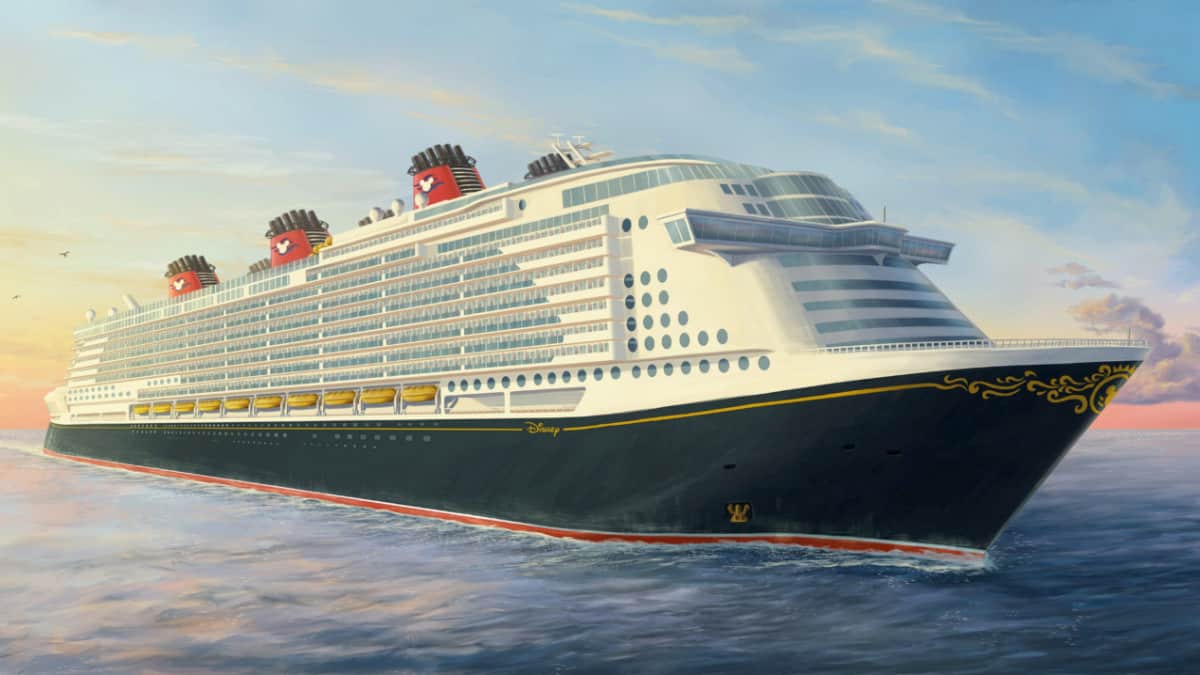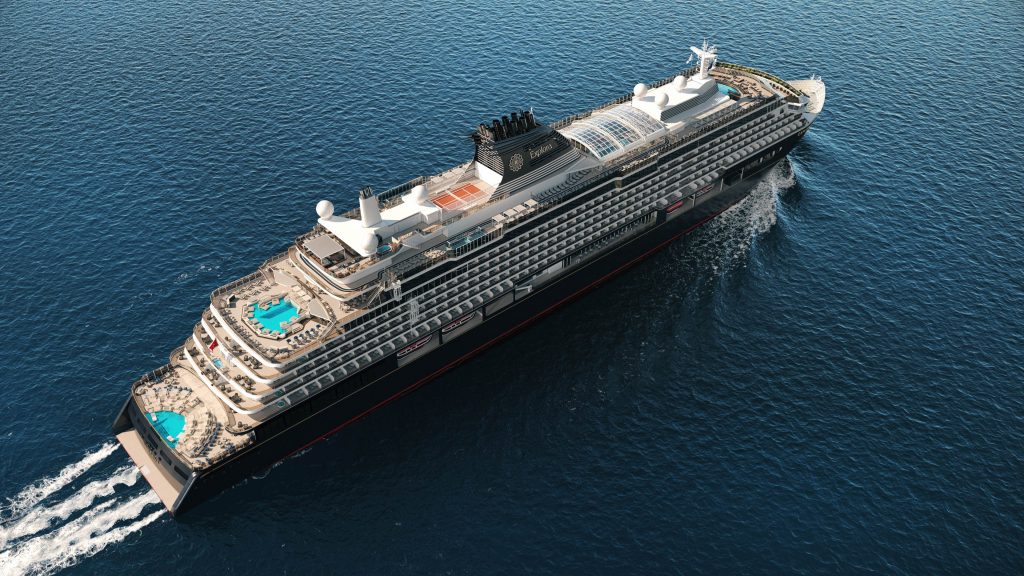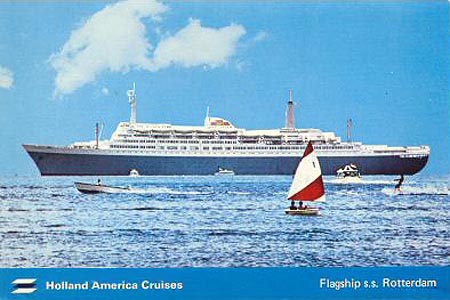
Today, Marco Polo is one of the oldest cruise ships in active service. She dates from 1964 when her keel was laid down at the East German yard of Mathias Thesen. The following year, she was completed and started her lengthy career as Alexandr Pushkin (Alexandr Pushkin was a Soviet writer, killed at the age of 38 in a duel) for the Baltic Shipping Company, one of the largest shipping lines of the Soviet Union. She was the second vessel of the so-called “poet” or “writer” class, which consisted of five vessels of which she is now the only survivor. Ivan Franko was the first ship (1964) followed by Alexandr Pushkin (1965), Taras Schevchenko (1967) , Shota Rustaveli (1968) and finally Mikhail Lermontov(1972).

ALexandr Pushkin
She had an ice strengthened hull, and because of her heavily built hull (which was also for possible use as a Soviet troop ship for which she had also been fitted with larger fuel tanks so she had a range of 10,000 miles and larger storage rooms), she soon gained a reputation for being a stable ship. Mainly built for (North Atlantic) liner service, she carried 766 passengers in two classes. As built Alexandr Pushkin was an all outside cabin ship, which even applied to the crew cabins!

Her cabins were fitted with a third tap, a seawater tap, besides the ones for hot and cold water, a feature that has long been abandoned in modern passenger ships. Alexandr Pushkin’s career as flagship of the Baltic Shipping Company started with some cruises before she switched to North Atlantic liner service. This would usually include Leningrad (her homeport), Helsinki, , Copenhagen, Tilbury, Le Havre and Montreal. North Atlantic liner service was declining rapidly at the time, as ships were being replaced by the aeroplane, and her only competitors on the route were the famous Cunarder Queen Elizabeth 2 and the Polish Stefan Batory, the former Holland America liner Maasdam).
Her fully enclosed promenade was greatly appreciated by her passengers on the always stormy North Atlantic. She divided her time between cruising out of Europe in spring time, then North Atlantic liner service and starting late summer, cruising from Canada, and in the Caribbean before returning to Europe. In 1975 already, Alexandr Pushkin was refitted quite extensively, with the accent being to make her more suitable for cruising. Now, there were cabins for all passengers, as before she could carry 500 passengers without cabins. Inside cabins were added and her superstructure was extended forward so more public spaces could be created, most important her main lounge was extended forward and now featured a balcony, thus becoming a “grand ballroom’. To her inside pool and outside one was added.

Her last trans atlantic voyage was in 1980, she switched to fulltime cruising now. From 1979 to 1984, Alexandr Pushkin served the German market and sailed for Transocean Cruises. After this, she was transferred to another Soviet shipping company, the Far Eastern shipping Company, with homeport Vladivostok. During her final days under the Soviet flag she was chartered to CTC Cruises, for whom she sailed out of Europe and Australia. However, this came to an end when the Soviet Union collapsed. A year later an english business man, Gerry Herrod, bought her for intended use as a soft expedition cruise ship for his Orient Lines.

Renamed Marco Polo, she was sent to Greece, the Perama shipyard in Piraeus for a massive three year refit. She was entirely gutted within, her superstructure extended aft with naval architect Knud E. Hansen and interior designers Michael and Agni Katzourakis being responsible for the job.

She was fitted with Denny Brown stablizers. Marco Polo was also brought up to standard for the new SOLAS rules (SOLAS stands for Safety of Life at Sea). Spending her time in the Orient and the waters of Antarctica she quickly gained a solid reputation. She even carried a helicopter during her Antarctic trips so wildlife could be spotted. In 2002 Orient Lines was sold to Norwegian Cruise Lines and for a short time she sailed with fleetmate Crown Odyssey (until 2003).


In 2008 Marco Polo was sold to Global Maritime who immediately chartered her out to German Transocean Tours. This lasted only for two years, as from 2010 onwards she was chartered to CMV Cruises who planned to operate her for five years, but she has proven to be so popular that she has been retained in the CMV fleet ever since. She has been scheduled for another season in 2020. She is targeted to budget-minded well-travelled people being in their fifties and older, and she is an adult only ship. Marco Polo stands out being on of the few ships that do not carry thousands of passengers and her intimate atmosphere attract a loyal following. It is unbelievable, but she is still sailing with her original Sulzer machinery and she has covered an incredible distance with them.
In 2010, I was given permission by CMV for a ship visit, and after having toured the ship, I was taken to the bridge where I met the captain. He at once ordered the first engineer to give me a full tour of the engine room, which looked immaculate. Then, before I left the ship, he gave me a stack of sea charts from the chart room. A ship visit I will not forget!




